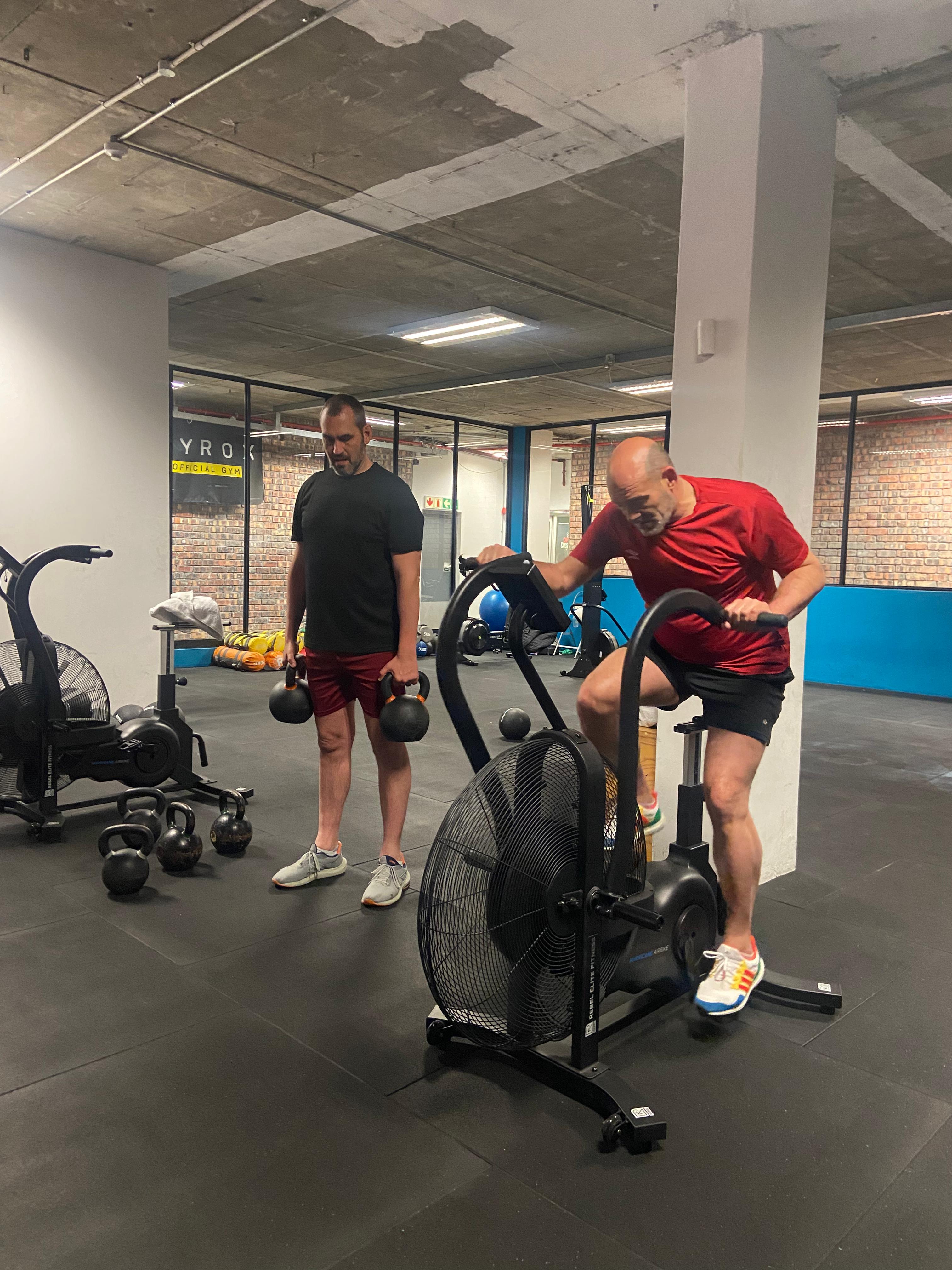How to Train Functional Fitness Around Injuries and Adjust your CrossFit, HYROX & SWEAT (our HIIT style training) Workouts
20 October 2024
EDITORS NOTE: The images in this post are not correlated to the article.
Injuries are frustrating, no doubt about it, and the truth is that as much as you can train smartly to minimize the risk of injuries they do happen - sometimes in the Gym, but even more often outside of the Gym and those times can feel like a huge roadblock, especially if you love high-intensity workouts like CrossFit, HYROX, or PEAK SWEAT.
But here’s the good news: an injury doesn’t have to sideline you completely. In fact, training around it can be an opportunity to work on other movements and develop new skills—while still having fun! With some smart planning, you can adapt your functional fitness routine, keep progressing, and come out stronger on the other side.
In this post, we’ll dive into how to continue training with CrossFit, HYROX, and PEAK SWEAT despite an injury. Plus, we’ll look at the power of unilateral training and other tips for working around your injury in a way that’s both effective and enjoyable.
1. CrossFit: Scaling with Purpose
CrossFit is known for its intensity and varied movements, but an injury doesn’t mean you have to skip out on your WOD (Workout of the Day). The beauty of CrossFit is its scalability—you can always modify exercises to fit your abilities. If you’re dealing with a shoulder injury, for instance, you can swap out overhead presses for lower-body movements like air squats, box step-ups, or kettlebell swings. Have a knee issue? Focus on upper-body work like pull-ups, rowing, or even core exercises.
Our PEAK Gyms are all about community, and our Coaches are skilled at helping you scale workouts. So instead of dreading modifications, think of it as a chance to master movements you may not have spent as much time on before. You’re still a part of the WOD, but you’re giving your body what it needs to heal.

PRO TIP: Always let your PEAK Coach know about your injury. They can help you modify exercises and ensure you’re training safely while still getting a solid workout.
2. HYROX: Focusing on Low-Impact Strength
HYROX is all about endurance-based functional fitness, combining running with strength movements like sled pushes, lunges, and wall balls. When you're injured, especially in the lower body, you’ll need to rethink your approach. The good news? You can still train for HYROX by adjusting the intensity and focusing on low-impact strength training.
For example, if running or lunging isn’t an option, you can replace these with rowing or cycling—both excellent ways to maintain cardio fitness without putting strain on injured joints. Meanwhile, you can continue building strength with upper-body exercises like sled pulls, farmer’s carries, or wall balls (if your injury allows).
PRO TIP: Consider breaking up your training sessions into skill-focused drills. Work on your rowing technique, improve your sled push strength, or hone your upper-body endurance while a lower body injury heals.
3. PEAK SWEAT: High Intensity Doesn’t Have to Mean High Impact
Our PEAK SWEAT Program ("Functional High-Intensity Interval Training-HIIT") is all about fast-paced, explosive movements mixed with high volumes of Cardio. But if you’re injured, especially in the knees, ankles, or shoulders, the last thing you want is high-impact exercises that could make things worse. Luckily, PEAK SWEAT can easily be modified into low-impact intervals while still keeping your heart rate up.
If plyometrics like jump squats or burpees are off the table, you can swap them out for low-impact alternatives like air squats, glute bridges, or seated overhead presses. The key is to keep moving and maintain intensity without aggravating your injury. Cycling, Rowing, or Ski Erg can be great low-impact alternatives to get that heart-pounding PEAK SWEAT effect without the risk.
PRO TIP: Focus on exercises that limit strain on your injured area but still challenge your cardiovascular system. Try using variance of movements to best create the intensity you are looking for, but even if an injury sometimes means spending the majority of your workout on for instance a Bike Erg - that's ok too!
4. Unilateral Training: Strengthening While You Heal

If you’re injured, unilateral training—exercises that work one side of the body at a time—can be a lifesaver. Not only does this prevent muscle imbalances, but it can also speed up the recovery process through something called "cross-education." This means that by training the uninjured side of your body, you’ll help maintain strength and muscle tone on the injured side, even if you’re not using it.
For instance, if you’ve hurt your right shoulder, you can still perform single-arm dumbbell presses with your left. Or, if you’ve injured a knee, single-leg deadlifts or step-ups on your uninjured leg will keep your lower body strong while helping your injured knee heal faster. Unilateral training forces you to engage stabilizing muscles, improving balance and coordination while working around your injury.
PRO TIP: If you can't do the more explosive movements, include exercises like single-arm kettlebell presses or one-legged Romanian deadlifts in your routine to maintain strength and balance during recovery.
5. Mobility and Recovery: A Key Focus for All Workouts
Whether you’re a CrossFit enthusiast, HYROX competitor, or PEAK SWEAT fanatic, mobility is a cornerstone of functional fitness. When you’re dealing with an injury, it’s even more crucial. Mobility work keeps your muscles and joints limber, prevents stiffness, and improves circulation, which aids recovery.
If you’ve hurt your knee, for example, you can focus on hip and ankle mobility to ensure you maintain full range of motion around the injury. For shoulder injuries, gentle stretching and foam rolling of the surrounding muscles can help reduce tension and promote healing. Mobility work also improves body awareness, which helps you move better in all areas of fitness.

PRO TIP: Spend at least 10 minutes a day on mobility work, focusing on the areas around your injury. Gentle stretching, foam rolling, and resistance band exercises can work wonders for recovery - and of course don't forget about our PEAK Daily Flex.
6. Keep It Fun: Explore New Movements

An injury might take you out of your regular routine, but it’s a chance to try something new. You might find that experimenting with alternative movements not only keeps you engaged but also helps you discover new passions. If you’re a CrossFit devotee, try mixing in a few other sessions and look into our PEAK Daily Flex to improve your range of motion and flexibility. If HYROX is your jam, why not focus on rowing or cycling intervals if you can't run as an example?
The key is to keep your workouts exciting and varied so that you don’t lose the enjoyment factor. Injuries can be frustrating, but they don’t have to be boring. The more you mix things up, the more likely you are to stay motivated and positive throughout your recovery.
PRO TIP: Challenge yourself to try something new during your recovery. Either in our PEAK Gyms or try swimming, or yoga, exploring different types of movement can keep you mentally and physically engaged.
In Conclusion: Keep Moving Forward, Even When Injured
Injuries may slow you down, but they don’t have to stop you. Whether you’re into CrossFit, HYROX, or PEAK SWEAT, there’s always a way to keep moving and improving. By focusing on unilateral training, mobility work, and modifying exercises, you can maintain your fitness and even discover new areas of strength.
Remember, setbacks are temporary, but your commitment to fitness is long-lasting. Keep exploring new movements, stay patient, and make the most of every workout. Injuries are just part of the journey—use them to come back stronger, fitter, and more resilient!
Your Team at PEAK

